When you step into a spa, Hot Stone Massage is a therapeutic treatment that uses smooth, heated stones to relax muscles and improve circulation. This ancient practice, rooted in Native American and Asian traditions, has become a staple in modern wellness centers because it feels like a warm hug for your muscles.
Key Points
- Heated basalt stones melt tension and boost blood flow.
- Typical session lasts 60‑90 minutes and costs $80‑$150.
- Safety hinges on stone temperature and therapist training.
- Great for stress relief, chronic pain, and improving sleep.
- Works well alongside Swedish or deep‑tissue massages.
Comprehensive Guide to Hot Stone Massage
Imagine sinking into a warm stone after a long day of work-your shoulders soften, your breath steadies, and the world seems to pause. That’s the promise of a hot stone massage, and this guide will walk you through everything you need to know, from the history behind the technique to how you can book a session near you.
Definition and Context
In a Hot Stone Massage, therapists lay heated stones-usually made from volcanic basalt-on key points of the body such as the spine, palms, and between the shoulder blades. The stones are kept at a temperature of 120‑130°F (49‑54°C), warm enough to relax muscles without burning the skin. The practice dates back centuries, with early references found in Native American healing rituals and later refined in Asian hot‑stone therapies.
Benefits of Hot Stone Massage
Why choose this treatment over a standard Swedish massage? Here are the main advantages:
- Deep muscle relaxation - The heat penetrates deeper than manual pressure alone, loosening knots that are hard to reach.
- Improved circulation - Warm stones dilate blood vessels, delivering more oxygen and nutrients to tissues.
- Stress reduction - The combination of heat and gentle pressure triggers the release of endorphins, the body’s natural mood‑boosters.
- Better sleep - Many clients report falling asleep faster and enjoying deeper rest after a session.
- Enhanced flexibility - Warmed muscles stretch more easily, which can aid in post‑workout recovery.
Clients ranging from athletes to office workers have praised the therapy for easing chronic back pain and tension headaches. One London‑based therapist notes, “I’ve seen patients who suffer from fibromyalgia report noticeable symptom relief after just a few sessions.”
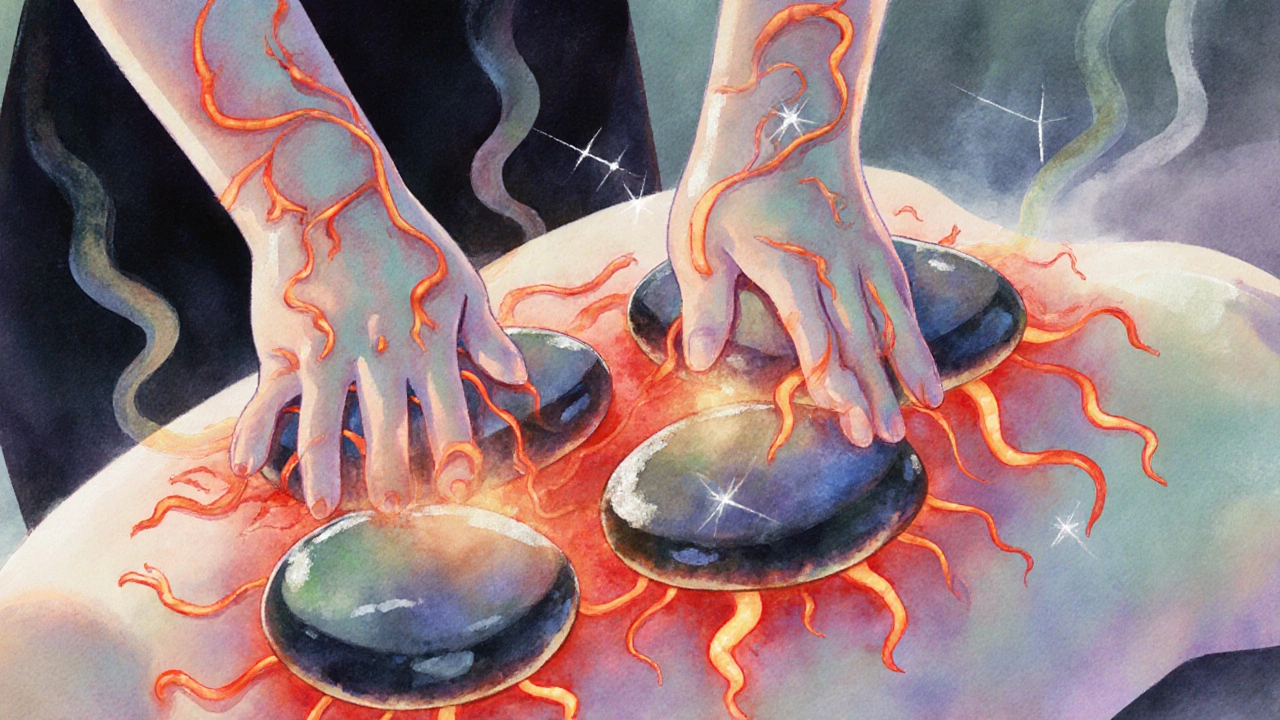
Types of Hot Stone Massage Available
While the core technique is the same, spas often offer variations to suit different needs:
- Classic Hot Stone: Heated stones are placed on the back and limbs, and the therapist uses them for gentle gliding strokes.
- Hot Stone Deep‑Tissue: Combines heated stones with firmer pressure for athletes or those with chronic muscle injuries.
- Hot Stone Swedish Fusion: Alternates between traditional Swedish strokes and stone work for a balanced experience.
- Pregnancy‑Safe Hot Stone: Uses lower temperatures and avoids the abdomen, focusing on the lower back and legs.
These options are typically listed under “Massage” or “Wellness” menus on spa websites, making it easy to choose the style that fits your goals.
How to Find Hot Stone Massage Services Near You
Finding a reputable therapist doesn't have to be a guessing game. Follow these steps:
- Search online directories for "hot stone massage" combined with your city (e.g., "hot stone massage London").
- Check reviews on platforms like Google, TripAdvisor, or Yelp. Look for mentions of stone temperature control and therapist certification.
- Visit the spa’s website and verify that they list the type of stones they use-basalt is the industry standard.
- Call ahead and ask about therapist training, sanitation practices, and whether they offer a pre‑session consultation.
- Consider spas that also provide related services such as Swedish Massage or Deep Tissue Massage, which can complement a stone session.
Many major cities now have dedicated hot‑stone studios, and several boutique wellness centers incorporate the treatment into broader holistic packages.
What to Expect During a Session
Your session typically follows this flow:
- Consultation (5‑10 min): The therapist asks about any injuries, preferences, and desired pressure.
- Preparation (5 min): You lie on a padded table, and a warm towel covers your modesty.
- Stone placement (10‑15 min): Heated basalt stones are positioned on your spine, palms, and legs.
- Massage (30‑45 min): The therapist uses the stones to glide along muscles, interspersed with hand pressure.
- Cool‑down (5‑10 min): Stones are removed, and a cool compress may be applied to balance temperature.
The room is usually dimly lit, with soft music and aromatic oils adding to the relaxation. You’ll likely feel a gentle warmth spreading through your body, followed by a pleasant, lingering calm.
Pricing and Booking
Cost varies by location, spa reputation, and session length. In the UK, typical rates are:
- 60‑minute session: £80‑£110
- 90‑minute session: £120‑£150
- Combo packages (e.g., three sessions): 10‑15% discount
Most spas accept online bookings via their website or phone calls. It’s wise to book at least a week in advance, especially on weekends, to secure a qualified therapist. Some venues also offer a short “intro” session at a reduced price for first‑time guests.
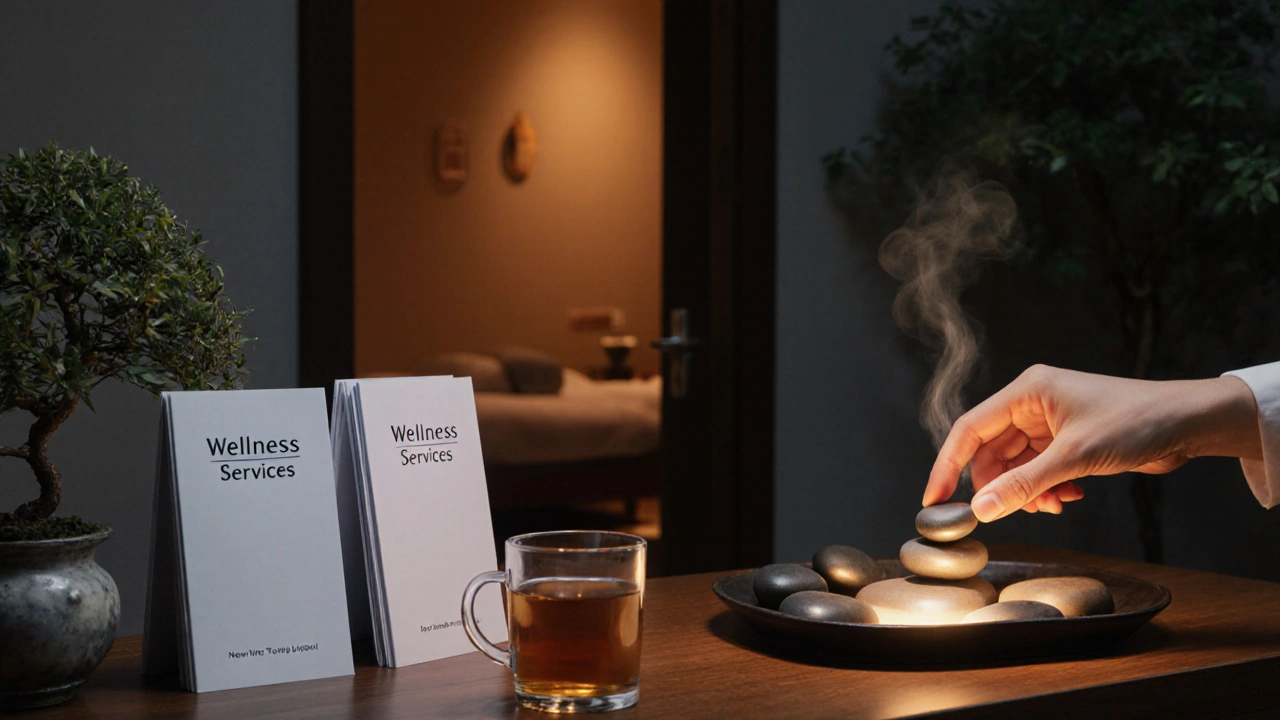
Safety Tips
Hot stone therapy is safe when performed correctly, but keep these precautions in mind:
- Ensure stones are tested for temperature-ideal range is 120‑130°F.
- Ask the therapist to check skin sensitivity before placing stones.
- People with diabetes, skin conditions, or cardiovascular issues should consult a doctor first.
- Avoid alcohol before the session; it can alter pain perception and increase risk of overheating.
- Stay hydrated-drinking water helps flush out toxins released during the massage.
Reputable spas follow strict sanitation: stones are washed, heated, and wrapped in fresh towels for each client.
Comparison Table: Hot Stone Massage vs. Swedish Massage
| Aspect | Hot Stone Massage | Swedish Massage |
|---|---|---|
| Primary Tool | Heated basalt stones | Hands, forearms, elbows |
| Heat Involvement | Yes, 120‑130°F | No |
| Typical Session Length | 60‑90 min | 60‑75 min |
| Best For | Deep muscle tension, chronic pain | General relaxation, circulation boost |
| Contra‑indications | Pregnancy (high temps), open wounds | None specific; mild conditions okay |
FAQ: Your Hot Stone Massage Questions Answered
How hot are the stones used in a hot stone massage?
Therapists heat the stones to around 120‑130°F (49‑54°C). This range is warm enough to relax muscles but cool enough to avoid burns.
Can I request a specific pressure level?
Absolutely. During the initial consultation, tell the therapist whether you prefer a gentle, medium, or deep pressure. They’ll adjust stone placement and hand work accordingly.
Is hot stone massage safe for people with arthritis?
Yes, as long as the therapist uses the correct temperature and avoids placing stones directly on inflamed joints. Many arthritis sufferers find the heat soothing for stiff joints.
Do I need to shower after the session?
A quick shower is optional but recommended. It helps wash off any residual oils and leaves you feeling refreshed.
How often should I get a hot stone massage?
For general stress relief, once a month works well. If you’re targeting chronic pain, a bi‑weekly schedule may provide faster results.
Ready to Experience the Warmth?
If you’re curious about how a hot stone massage can melt tension and boost wellbeing, start by searching for a certified therapist in your area today. Book a session, relax, and let the stones do the work for you.
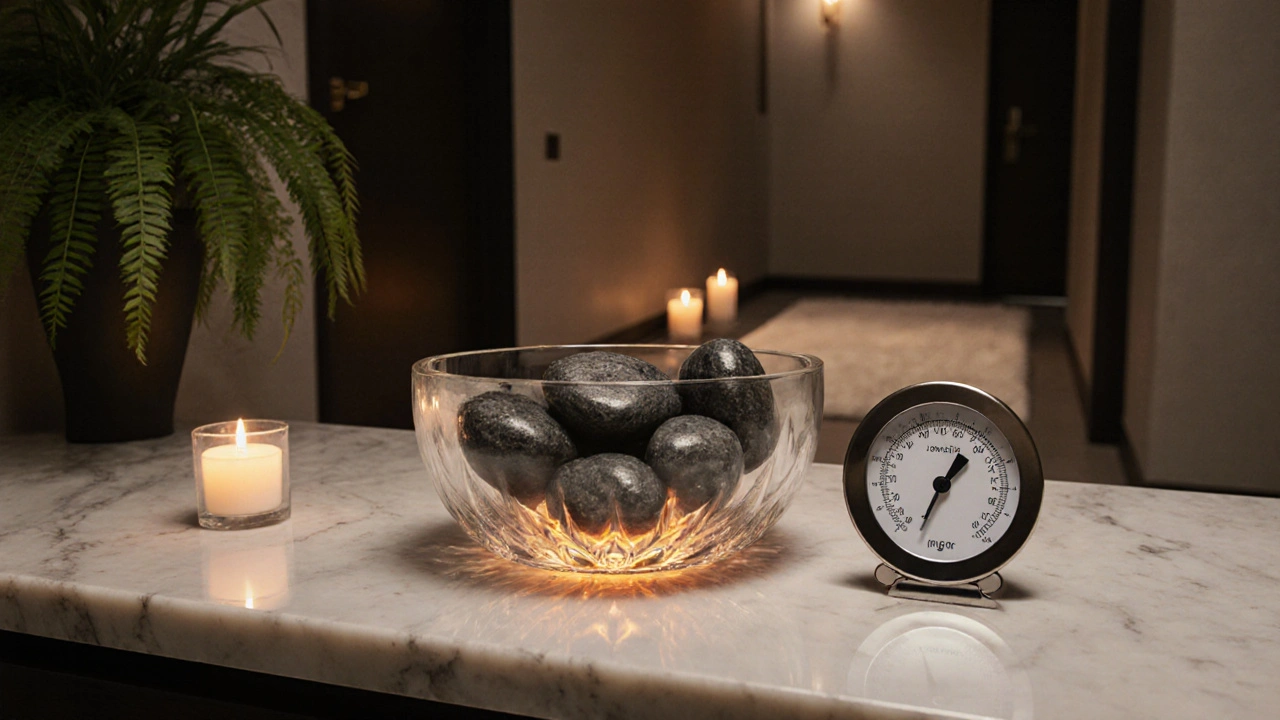

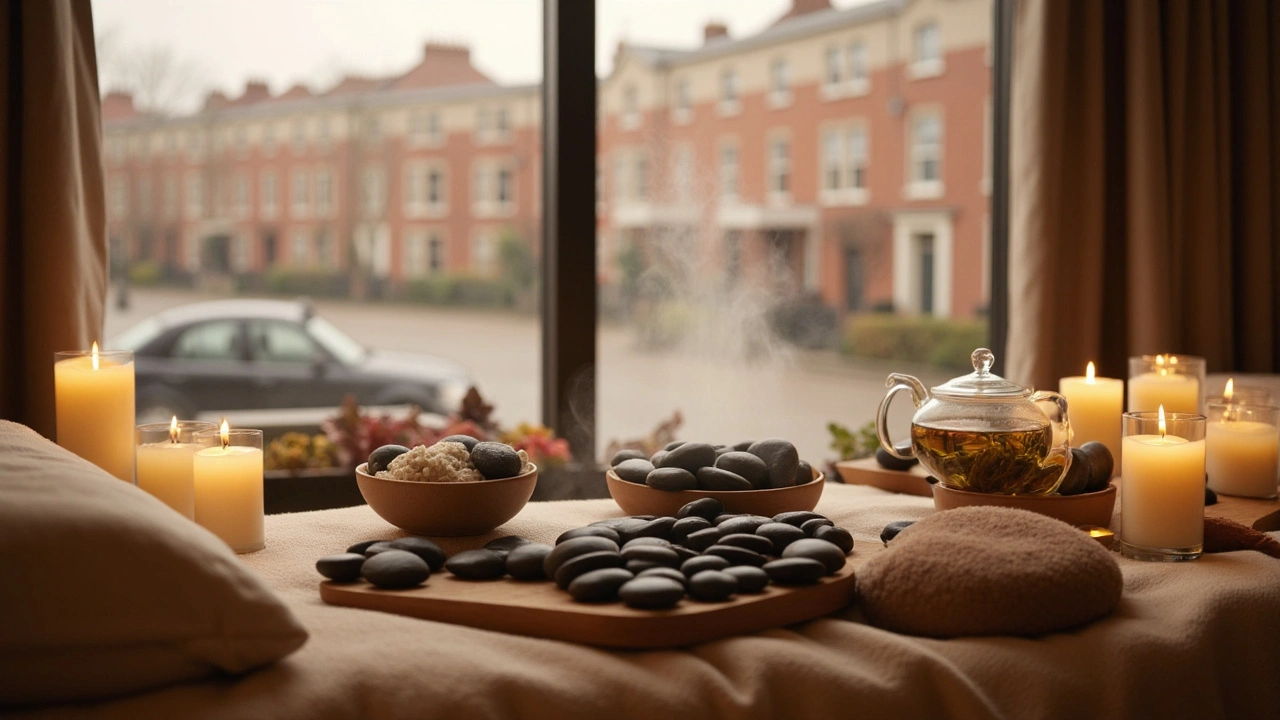



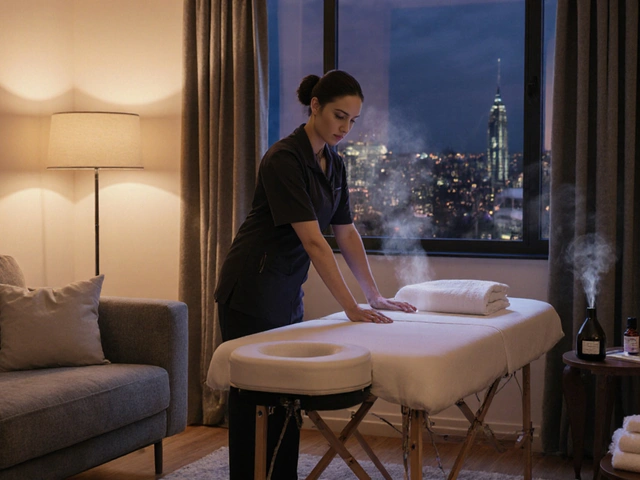
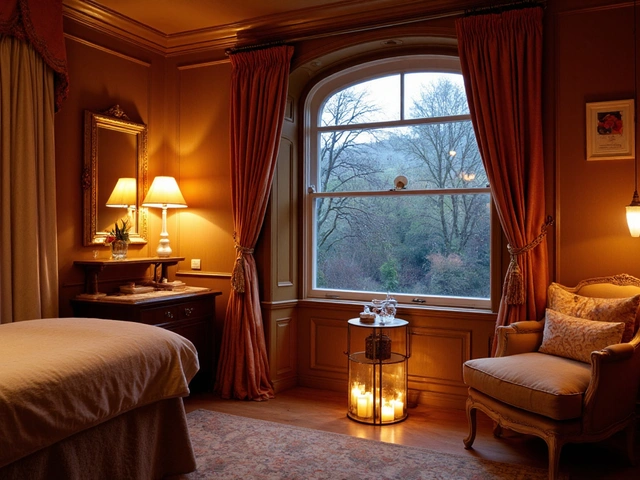
Gabby Eniola
October 22, 2025 AT 15:46Thanks for the thorough guide, I’ll definitely try a hot stone session soon!
Tony Stutz
October 26, 2025 AT 18:33I’m not buying the whole "relaxation" story that spas sell you. They heat those basalt rocks with cheap electric heaters that could be emitting hidden EM fields. Every time you lie down, you're soaking up more than just warmth; you're taking in invisible signals that can mess with your nervous system. The industry loves to hide this because it protects their profit margins. If you care about real health, you need to ask the therapist how they calibrate the temperature and what power source they use. Look for places that publish their stone‑temperature logs, not just glossy brochures.
Madi Vachon
October 31, 2025 AT 09:40The therapeutic efficacy of basaltic lithotherapy is often overstated in mainstream wellness discourse, a phenomenon I refer to as corporate hyperbole. By deploying thermodynamic gradients that penetrate the myofascial layers, practitioners claim to modulate autonomic tone, yet empirical data remains scant. Moreover, the commodification of such modalities serves as a soft power instrument, aligning consumer subservience with neoliberal health metrics. In my view, the true value lies not in the superficial warmth but in the strategic allocation of capital toward evidence‑based interventions. If we are to uphold a rigorous standard, spas must publish peer‑reviewed outcomes rather than rely on anecdotal testimonials.
Sunny Kumar
November 7, 2025 AT 08:20OMG!!! I just read this entire hot stone saga and my brain is literally melting!!!
Did you even think about the *energy* vibes that those volcano rocks bring into our sacred bodies???
The spa industry is a massive profiteering machine that masks its true agenda behind soothing aromas!!!
Every stone is heated on a hidden grill that channels electromagnetic whispers straight into our spine!!!
They tell us it's all about circulation, but really it's about controlling the blood flow of the masses!!!
I swear they use secret salts in the oil to make us more compliant!!!
And don't even get me started on the illegal use of *dark* basalt that was mined from cursed lands!!!
People think it's just a pampering session, but it's a ritual of manipulation!!!
The therapist's hands are like puppeteers, pulling at the strings of our nervous system!!!
If you’re smart, you read the fine print on the booking page and check the stone temperature logs!!!
Hydration is essential because it flushes out the toxic aura they inject with each warm stone!!!
Avoid alcohol, not because of safety, but because the chemicals in the stones react badly with ethanol!!!
Seriously, demand a certified practitioner who can prove the basalt is ethically sourced!!!
Otherwise you’re just a candle in the wind of corporate wellness propaganda!!!
Wake up, folks, and take back your bodies before the next stone drops its covert heat!!!
Tracy Riley
November 13, 2025 AT 03:13The interplay between heat and consciousness evokes a subtle alchemy that transcends mere muscular relief. One might say that the stones act as conduits, translating geothermal energy into a language the body intuitively understands. In this sense, the massage becomes a dialogue between flesh and earth, a quiet meditation on impermanence. While the brochure promises relaxation, the deeper benefit is an invitation to contemplate the fleeting nature of tension itself.
Mark Ghobril
November 18, 2025 AT 22:06If you’re curious, just book a session and see how it feels. The first time can be a bit intense, but the afterglow is worth it. Remember, consistency beats occasional indulgence for long‑term well‑being.
Adam Williams
November 24, 2025 AT 17:00Whoa, this guide totally rocks! 🌟 The stone vibe is like a cozy blanket for your muscles, and the pricing breakdown makes planning a breeze. Can’t wait to slide into one of those warm basalt cushions! :)
Jess Felty
November 30, 2025 AT 11:53Listen, the hidden agenda behind those soothing stones is more sinister than any spa brochure admits. They embed subtle frequency patterns that can recalibrate your neural pathways without consent. Reject the passive consumption and demand full transparency before you surrender to the heat.